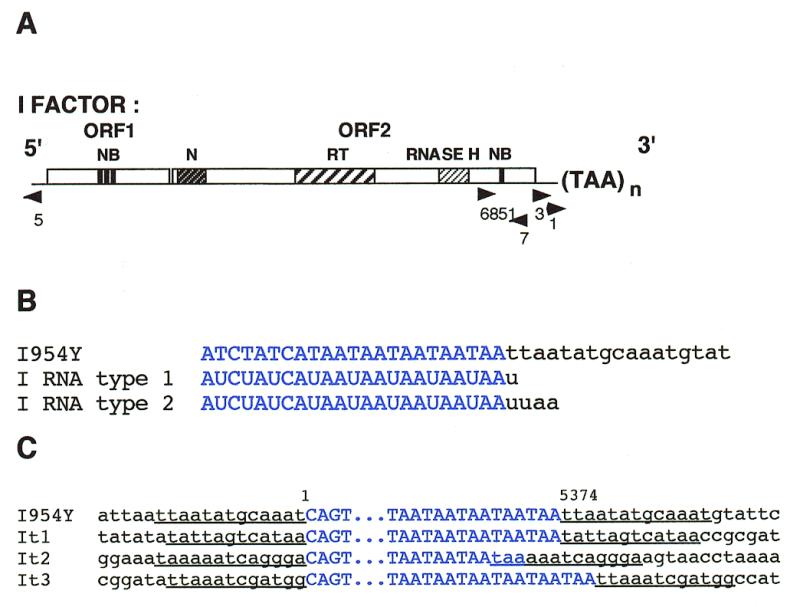Figure 1.

Structures of the I factor, of the 3′ ends of transcripts of a wild-type I factor, and of its transposed copies. (A) Structure of the I factor. The symbols are as follows: ORF1 and ORF2, the two open reading frames; NB, zinc finger motifs; N, endonuclease domain; RT, reverse transcriptase domain; RNASE H, RNase H domain. The TAA repeats at the 3′ end are shown. Arrowheads indicate the positions and orientations of the oligonucleotides used in PCR and sequencing experiments. (B) Sequences of the 3′ ends of the wild-type I factor I954Y and of the two types of RNAs produced by this element. (C) Sequences of both ends of some transposed copies of the single I954Y I factor. The figure shows examples of the various types of transposed copies containing the same number of TAA repeats as I954Y (It1), and less (It2) or more (It3) TAA repeats than I954Y. Sequences corresponding to the I elements are shown in blue and flanking sequences in black. Target site duplications are underlined. Four out of the 12 insertions analyzed were at sites containing the sequence TAA which could be either part of the target site duplication or one of the TAA repeats at the end of the I factor (like It2).
